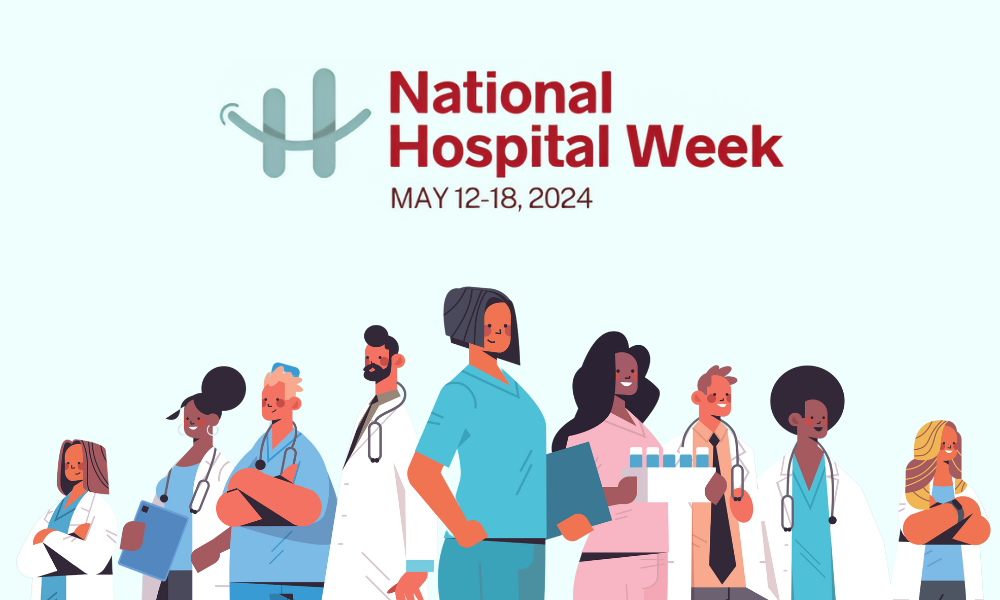Today, locum tenens is a fixture of the healthcare staffing landscape. When a doctor goes on vacation, it’s perfectly normal to cover her shifts with a temporary physician. While it may seem as if locum tenens staffing was always “a thing,” it’s only gained widespread acceptance within the healthcare industry in the past decade or so.
For many employers, the grudging acceptance of locums has, in fact, turned into a warm embrace, one that confers multiple benefits to facilities that now see it as a strategic staffing advantage.
So, to channel Al Pacino’s character in Scent of a Woman, it’s only gettin’ warmed up.
Demand for locum tenens physicians and advanced practitioners boomed by about 25% over the past year, shattering initial revenue projections, and swelling the market for temporary physicians to $6.1 billion. More than 50,000 physicians worked locums shifts in 2022, representing 7% of all active physicians today. The locum tenens provider pool has increased by 88% since 2015, signaling an ample supply of mobile providers in the years ahead.
To wit, staffing experts predict that locum tenens notch 10% growth this year and another 8% in 2024. Those numbers might lead one to believe this physician staffing niche was always an essential ingredient of the healthcare delivery pie, but such is not the case.
The locum tenens industry was one founded out of desperation. In Latin, locum tenens means “to hold the place of” or “to substitute for,” and that’s what these docs did and still do (check in tomorrow to learn where the name originated). Early temporary physicians stepped in to serve rural communities that had no provider or were understaffed and unprepared to handle so much as the smallest seasonal surge in patients.
It seems like a young industry in many ways, but locum life is now in its fifth decade. The locum tenens story is one of vision, adaptability, and filling needs efficiently. It’s a fascinating tale of how a handful of enterprising minds in the 1970s willed into existence a multi-billion dollar industry that’s become one of the most significant segments of healthcare staffing.
It’s a story that’s been largely untold — until now.
Heroes of the American Frontier
Picture post-Revolution America. It’s 1784. There’s a vast expanse of uncharted territory with widely unknown terrain. But along the coastal Northeast, large urban areas are forming.
Medicine in America is in its infancy, but there are physicians of European ancestry and education, such as John Morgan, Joseph Warren – the director general of the Medical Department of the US Continental Army – and Benjamin Rush. These physicians played a part in the American Revolution – Rush even signed the Declaration of Independence.
At the turn of the 19th century, America trailed other more developed countries in the practice of medicine. Before the creation of dedicated medical schools, doctors had to learn by apprenticeship. The earliest medical schools in America were founded by what is now the University of Pennsylvania, Harvard University, and Columbia University. As settlers moved West and toward the South, other medical colleges began to pop up to treat the growing population.
The War of 1812 marked a turning point for Americans. It set in motion a transformative era characterized by the rise of urban centers, the flourishing of industry, and the surge of westward expansion. The supply of physicians in America couldn’t compete with population growth. There simply weren’t enough doctors to cover the yawning rural landscapes. But people needed doctors nonetheless, so docs went where the work was.
These “heroes of the frontier” went to great lengths to treat patients, and finding those patients could often be just as tricky as treating them. During the Civil War, these doctors were responsible for treating soldiers in both Union and Confederate camps. Also, while stationed at military forts, physicians were deployed to surrounding areas to treat patients. Sending physicians into communities became a pattern that the US adopted during wartime. Doctors were used in World War I to utilize new X-ray technology in mobile units across Europe.
Back on the homefront in 1911, the federal government allocated money for temporary healthcare providers who traveled across the West to treat Native American tribes. In a way, this indirectly marks the creation of the locum tenens industry and lays the foundation for what would become the modern-day “substitute” locum tenens physician. However, the industry didn’t hit its stride until some 50 years later.
Making Housecalls, Anywhere
Fast-forward to the 1960s, when physicians still traversed the country, assisting communities lacking accessible, quality medical care. The path these physicians chose bears a loose resemblance to what locum tenens is today.
In 1968, a group of French doctors and journalists, including Bernard Kouchner, traveled to war-torn Biafra, Nigeria. Kouchner is the former minister of Europe and minister of foreign affairs of France. In Biafra, the group of doctors and reporters saw firsthand the suffering of civilians, and they were outraged by the lack of medical assistance.
The political leadership at the time had manipulated the humanitarian aid for its own benefit and had left its own people in dire need of medical care. Kouchner’s group knew they had to find a way to help those suffering. So, they responded by creating a new model of humanitarian aid that emphasized medical care without discrimination. The group vowed to remain impartial in the way they administered care, and advocate for anyone and everyone to have the right to receive medical help no matter their race, creed, or religion.
Doctors Without Borders (DWB), also known as Médecins Sans Frontières (MSF), was formed in 1971 by Kouchner and 300 volunteers. To this day, DWB provides medical care on the ground and engages in advocacy efforts to raise awareness about the plight of those affected by humanitarian crises. DWB also brings attention to the lack of access to essential medicines and the challenges faced by displaced populations. Their impartiality ensures they provide aid based on medical criteria alone.
DWB showed that a group of doctors sent into a country for a short time could have a significant impact on the health and well-being of a community.
Experimenting with Temporary Docs
In 1973, young Dr. Alan Kronhaus began work on a project known as the Health Systems Research Institute (HSRI), which was funded by the University of Utah. HSRI was designed to help communities attract talented physicians to improve the conditions of rural practices.
HSRI would fly specialists to far-flung regions where healthcare services weren’t easily accessible. They also invested their own time and resources in these communities, personally recruiting physicians.
Dr. Kronhaus took his first assignment in Battle Mountain, Nevada. After a brief skiing vacation that winter, he returned to serve as the director of HSRI.
He often flew in to meet with city council members and local commissioners to discuss ways to raise money for recruiting physicians. He would talk to local doctors, make the HSRI elevator pitch, and lay out the nitty gritty to ensure these doctors didn’t feel threatened by the HSRI presence.
They would then offer to send a temporary physician to assist with the caseload, providing respite for overworked doctors in need of a break or a vacation. While the concept was novel, and local physicians weren’t always immediately bought into HSRI’s vision, the temporary staffing element was something doctors in the community took an interest in.
During his time as director, Dr. Kronhaus helped place temporary doctors in about 30 clinics in rural areas across the western United States. Before ending his commitment as director, Dr. Kronhaus recruited a colleague and friend to join HSRI, one he believed would make a great replacement to continue fulfilling HSRI’s mission.
Delivering Locum Tenens
Dr. Therus Kolff had just spent the past year traveling the world. He needed a job, and HSRI needed a physician in Hannah, Wyoming. He took his first assignment as a locum tenens physician taking care of 3,000 coal miners and ranchers while Dr. Kronhaus & co. looked for a permanent physician to work in his place.
Dr. Kronhaus had planned to leave for Chapel Hill, North Carolina. He had always had a thirst for knowledge and found himself missing clinical medicine.
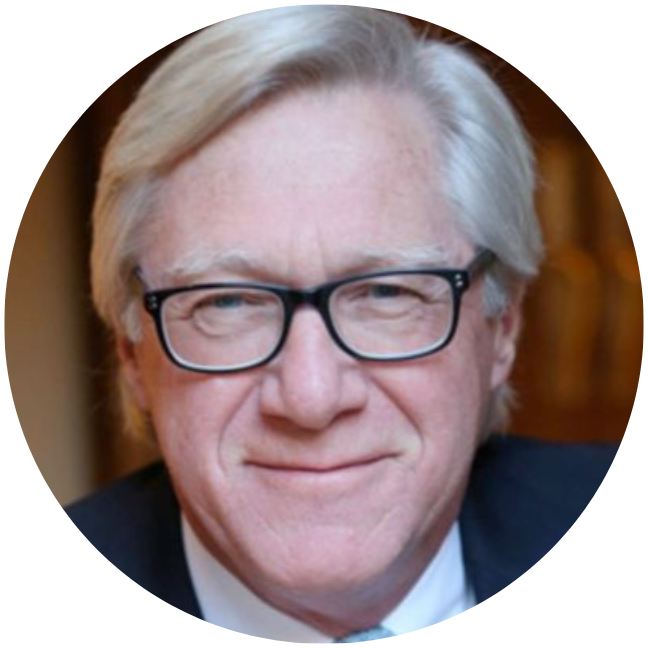
He was approached at a conference by a man who introduced him to The Robert Wood Johnson Clinical Scholars Program. The man said that while enrolled in the program, you could meet with anyone and do any type of research as long as it was productive. It was an open-ended opportunity he couldn’t pass up.
Dr. Kronhaus’ wheels started turning while he was at HSRI: Since medical practice was a fixed-cost operation, rural physicians who left to take a break for any amount of time still had to worry about overhead costs without the prospect of revenue.
So, the proverbial lightbulb went off. If doctors could get locum tenens coverage, it reduced the cost of their absence. This is what sparked his research into the economics of locum tenens coverage and the “Cost of Free Time for Rural Physicians,” which was the first published paper on locum tenens at the time.
Dividing the Land
Dr. Kolff took over for Kronhaus in 1976 and served as director of HSRI until 1978. During his time, he recruited and managed 65 physicians who he placed in 25 clinics across seven Western states and in Yellowstone National Park. HSRI, in conjunction with the University of Utah, managed the placement for all of the staff at Yellowstone to treat the 65,000+ visitors who visited the park daily.
Dr. Kolff became increasingly interested in the structure of locum tenens and how it could be done best. He worked locums in Nevada, Wyoming, Montana, and Utah, and eventually, got the idea that there was the possibility of creating a permanent locum tenens format. He set out in 1978 to study health policy and management at Harvard University. He wanted to apply his studies to create a business around locum tenens.
Although HSRI dissolved, the two had begun carving out a nationwide network of doctors for what would become locum tenens work. Enough physicians were working on a temporary basis for Dr. Kolff to start CompHealth in 1979. Dr. Kronhaus followed up with his own locum tenens business, KRON Medical, at the dawn of the ’80s.
Initially, the two friends set a dividing line: KRON Medical would handle locum tenens coverage in the Eastern US, and CompHealth in the West. Both operations thrived, and they quickly realized the need was significant enough that they could both work independently without stepping on each other’s toes.
Dr. Kolff and Dr. Kronhaus began discussing the possibility of combining forces again in a merger. They were still good friends, and by merging the two companies, the businesses would immediately become the largest temporary healthcare staffing agency. The two companies merged into what would one day become CHG Healthcare, the largest locums agency by revenue today.
With the transaction complete, the two relished the thought of working together moving forward. Dr. Kronhaus was happy because he knew he would gain relief from the daily grind, and he was more than happy for Dr. Kolff to take over responsibilities as CEO.
In the earliest days of locum tenens, Dr. Kolff’s team at CHG divided recruitment by the Mississippi River. Certain groups would pick and choose which states they would work in along the border, and together they began recruiting a network of fill-in physicians. They quickly realized there was more than enough need to go around.
They weren’t the only ones who realized it.
The End of the Beginning
In 1978, Dr. Ken Teufel was overworked in his solo family practice in a small Texas town. His practice was overflowing with patients. Making matters worse, he was the only doc specializing in obstetrics, which meant he couldn’t take vacations or weekends off. Dr. Teufel heard from colleagues practicing in rural and small communities around the state who were also forced to be on-call at all hours of the day, seven days a week.
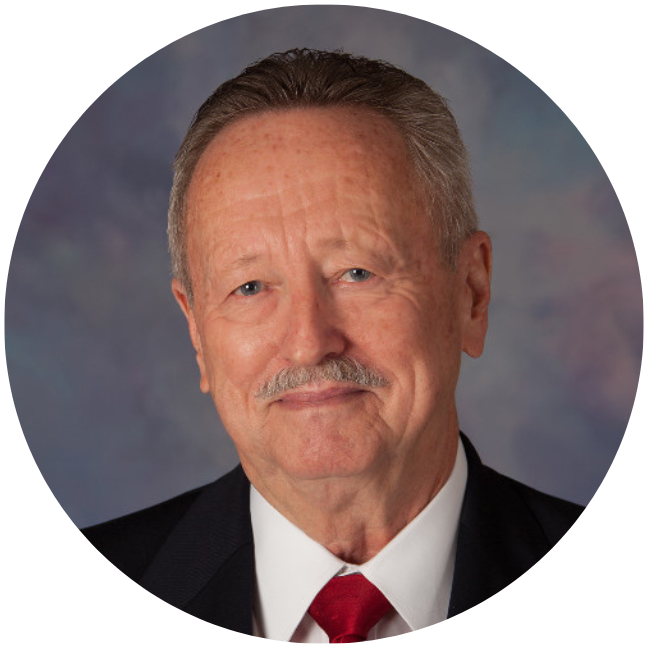
After a particularly hectic night on call, Dr. Teufel finally had an “a-ha moment.” He was determined to get a better balance between work and life, but he didn’t want to give up on practicing medicine.
Instead, he would offer to travel the country and cover for other doctors like him so they, too, could find relief. It wasn’t long before Dr. Teufel was inundated with requests from doctors desperate to take some time off for themselves. He created an extensive network of locums doctors in that first year, and he formed a company under the Physicians Relief Network (PRN) name.
Within five years, PRN became larger than Dr. Teufel ever imagined. By the mid-’80s, only a few companies, including PRN, were taking a business-like approach to the locum tenens staffing industry. PRN was acquired in 1989 by Medical Personnel Pool, which changed its name to Interim Healthcare in 1992. PRN went through several owners and name changes, and in 1993, the company split away as Interim Physicians, with Dr. Teufel at the helm as medical director.
In fact, this founding figure served as the medical director for Interim Physicians until his passing in December 2021, after writing 106 monthly columns for the firm during his time.
Jackson & Coker & Jackson
In 1987, a pivotal figure in the physician recruitment space decided to open a firm that focused on improving the way administrators, nurses, and other healthcare providers interacted with doctors.
Jackson C. Coker interviewed healthcare officials and asked them what the “biggest problem” was that hospital administrators saw, day in and day out. They answered that employees didn’t have a positive view of the doctors who served.

He wanted doctors to favor the hospital over any other options they had so that good doctors would ultimately choose to stay put. So he came up with a plan to improve those relationships.
Coker took his first contract in a small hospital where he would earn a percentage based on increasing hospital admissions. Coker trained employees by implementing new management operations, and then he worked to enhance the hospital’s financial business model. That first year was a great success for Coker, and it launched a career.
Coker transitioned from recruitment to begin advising hospitals full-time, giving them the knowledge they needed to best inform their recruitment efforts for hospital staff. Coker sold the Coker Group to now CEO Max Reiboldt in 1996.
The company operates now as a national healthcare advisory firm. While not a locums staffing company, Coker Group’s impact is still felt in the industry, helping administrators budget and plan to recruit new doctors to their staff — including locums.
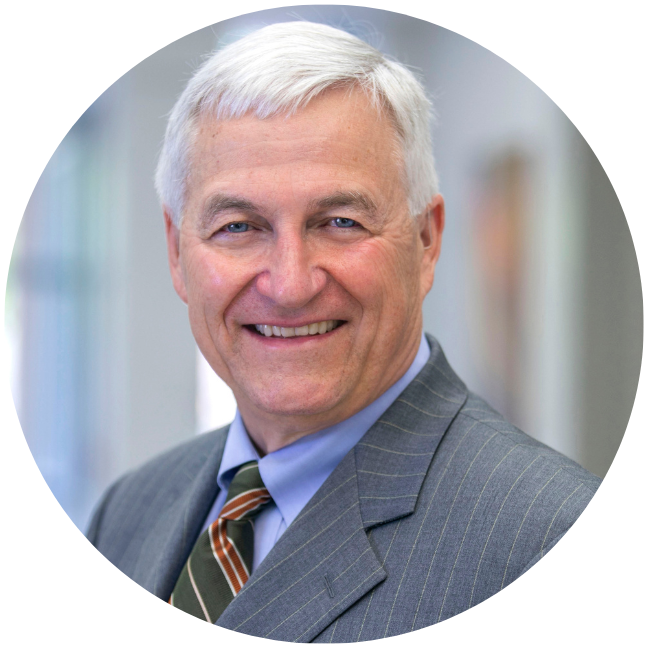
Not to confuse the reader too much, but Jackson C. Coker had a partnership at the time with a man with the last name of Jackson. That staffing firm, Jackson & Coker, was originally a spinoff of Coker’s executive search firm.
A Locums Empire Emerges
Rick Jackson, founder of Jackson Healthcare (and a whole bunch of other healthcare firms), sold Jackson & Coker in 1989. From 1990 to 2000, he was a venture capitalist, working out of a healthcare investment corporation in New York, looking to start healthcare services companies.
Watch the video below to hear Jackson’s story straight from the source.
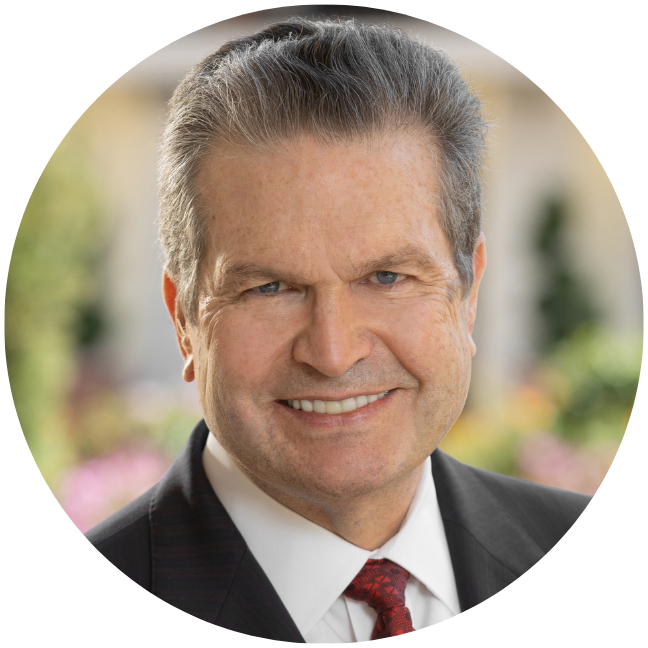
After Jackson & Coker was sold in 1989, a J&C vet, Chuck Harris, founded Harris, Kovacs, and Alderman to continue the legacy he had built as its top recruiter.
Harris founded HKA Locum Tenens in 1992, and at the time, it was the fifth-largest locums firm. HKA LT was sold to Interim Healthcare in 1999, but that didn’t stop Harris from teaming up a few years later with a friend of his who was rejoining the physician recruitment space.
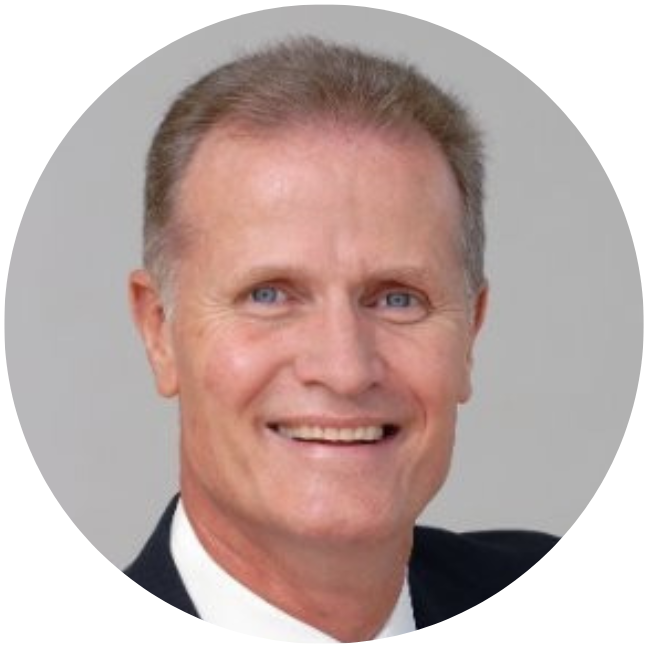
In 1991, StaffCare, another of the industry’s staffing behemoths, was founded. Today, StaffCare is the third-largest locum tenens agency. Its parent company, AMN Healthcare, is the second-largest healthcare staffing firm based on its travel nursing revenue and other types of healthcare staffing.
In 2000, Jackson decided to bet on himself and get back into physician recruitment, where he started. In the first year, the precursor to Jackson Healthcare brought in about $5 million.
Today his empire is the second-largest locum tenens agency and the seventh-largest healthcare staffing overall in the country, with more than $2 billion in annual revenue. Jackson Healthcare grew organically and through acquisitions from 2000 to the present day, including adding names to the Jackson family, such as LocumTenens.com, Jackson Physician Search, and then eventually relaunching Jackson + Coker, which now focuses entirely on locum tenens staffing.
A Booming Industry Standardizes
The locum tenens industry experienced remarkable growth in the early 2000s, tracing its origins back to the innovative minds of entrepreneurial doctors at The University of Utah. As the industry expanded to include numerous temporary staffing firms, its rapid growth drew both attention and concerns.
Pioneers like Dr. Kolff, Dr. Kronhaus, and Dr. Teufel initially developed locum tenens out of genuine concern for patients. However, with the vast capital influx into the industry, worries surfaced about potential business practices that might prioritize profit over patient care. Founders shared a palpable fear that the core value of patient welfare could be overshadowed by financial motivations.
In response to these concerns, particularly the need for ethical regulations, the National Association of Locum Tenens Organizations (NALTO) was established in 2001. This professional association, the only one of its kind for locum tenens agencies, enforces specific industry standards and guidelines. Membership with NALTO requires agencies to uphold locum tenens in the highest regard, adhering to a strict code of ethics and a commitment to honesty, objectivity, and integrity.
NALTO also provided the first industry networking opportunities exclusively for the locum tenens industry in the form of the annual Fall Fly-In event and its joint conference with the National Association of Physician Recruiters, typically held in spring or late winter.
NALTO’s ethical code delineates what is expected of locum tenens staffing agencies, facility clients, and providers. The agreement emphasizes honoring contracts, ensuring providers have proper insurance, and maintaining transparency and accuracy in records. This commitment to high standards ensures that the essence of locum tenens – delivering quality healthcare wherever needed – remains at the industry’s heart.
NALTO, Then... and Now

Answering Covid's Call
In the spring of 2020, after years of concept work, Locumpedia hatched an audacious plan to become the central resource of the locum tenens industry — just ahead of the first global pandemic in more than 100 years. Not the best timing, we’ll admit.
After spending most of 2020 reporting on the locum tenens industry’s response to Covid-19, we finally began building the first locum tenens platform combining news, resources, a comprehensive directory of locum tenens agencies, a free locum tenens job board, and marketing services for locum tenens agencies.
During the Covid-19 crisis, locum tenens physicians and advanced practice providers played a pivotal role in addressing the unprecedented surge in healthcare demands. Their ability to fill in healthcare roles on a temporary basis became more valuable than ever, as healthcare systems struggled to accommodate the sudden and overwhelming number of patients.
As covered extensively on Locumpedia (with some stories written by the late co-founder of the industry, Dr. Ken Teufel) and other sources, many locum tenens professionals were deployed to the hardest-hit areas, especially in the early months of the pandemic. Cities like New York, which became an epicenter of the outbreak in the U.S., heavily relied on these traveling professionals to bolster their frontline defense against the virus. Their flexibility allowed hospitals to quickly scale up their workforce, providing relief to permanent staff who were facing extreme exhaustion from long hours and the emotional toll of treating critically ill patients.
In addition to providing manpower in critical care units and emergency rooms, locum tenens providers also filled essential roles in testing centers, vaccination sites, and other areas that were vital to the pandemic response. This versatility showcased the wide array of skills and adaptability of locum professionals, proving their worth beyond traditional hospital settings.
However, the surge in demand for locum tenens services during the pandemic wasn’t without challenges. Many providers faced significant risks, with some contracting the virus. Furthermore, the rapid spread of the virus required these professionals to adapt to ever-changing guidelines, employ telemedicine tools, and even take on roles outside of their specialties in some cases. Despite the hardships, their dedication showcased the resilience and essential nature of the locum tenens sector within the healthcare system.
In the end, the pandemic underscored the invaluable role of locum tenens physicians and advanced practice providers, turbocharging a trend toward the increased use of temporary providers that began earlier. Their ability to quickly mobilize and adapt to the shifting needs of the healthcare landscape was not only a testament to their professionalism but also a beacon of hope in an otherwise challenging time.
Gotta Wear Shades

Traditionally, locum tenens roles predominantly attracted either newly graduated doctors or those nearing retirement. Now, with the broadening scope of opportunities across all specialties, the landscape has significantly changed. Much of this transformation can be attributed to the Interstate Medical Licensure Compact (IMLC), which has streamlined the process for physicians aiming to serve across multiple states.
Introduced in 2017, the IMLC revolutionized the licensing landscape for physicians. Previously, physicians faced the cumbersome task of navigating unique licensing requirements for each individual state. With the IMLC, they now register with their State of Principal License (SPL), and once they fulfill the Compact’s stringent criteria, they can seamlessly obtain licenses for any of the participating jurisdictions. Currently, 41 states have joined the initiative, with Washington D.C., and Guam also participating, suggesting a nationwide recognition of its benefits.
In 2023, the locum tenens industry has witnessed remarkable growth, spurred by a combination of clinician shortages and the backlog from COVID-19-related treatment deferrals. Data now indicates that locum tenens is the fastest-growing segment within healthcare staffing. Providers are increasingly drawn to this model, which offers flexibility and diverse assignments ranging from short stints to extended contracts of a few months.
The industry’s trajectory suggests a bright future for locum tenens. Healthcare administrators, recognizing the value locum professionals bring, are evolving their approach. No longer merely seen as “placeholders,” locum tenens practitioners are being integrated more strategically into healthcare frameworks.
Sources: SIA, 2014, Healthcare Staffing Report: Aug. 21, 2014 – SIA, 2015, Healthcare Staffing Report: May 7, 2015 – Health Carousel Locum Tenens, 2017, The Booming Locum Tenens Industry – Medical Staffing Consultants, 2018, Medical Staffing Industry Market: An Overview – SIA, 2018, Temporary Healthcare Staffing Revenue Growth to Decelerate to 6% This Year SIA Report – SIA, 2018, Healthcare Staffing Report: May 10, 2018 – Around the Clock Healthcare Services, 2019, Healthcare Staffing Market Overview – Business Wire, 2020, Global Healthcare Staffing Market (2020 to 2027) – Size, Share & Trends Analysis Report – ResearchAndMarkets.com – Locumpedia, 2020, Locum Tenens 2020: A Year Like No Other – SIA, 2020, Global Staffing Industry Forecast: August 2020 Interim Update – SIA, 2020, SIA Raises 2020 US Staffing Forecast to $126.1 Billion; Double-Digit Growth Projected for 2021 – Curative, 2022, Locum Tenens Revenue Projected to Reach $4.7 billion in 2022 – Barton Associates, 2023, Locum Staffing & Planning for 2023 – Global Market Insights Inc., 2023, Healthcare Staffing Market to hit USD 131.5 billion by 2032, says Global Market Insights Inc. – SIA, 2022, US Staffing Industry Forecast: May 2022 Update – The Insight Partners, 2023, Healthcare Staffing Market Report –Reach $51.58 Billion at 5.8% CAGR with Locum Tenens Staffing Segment Driving Growth During 2021-2028
Given current momentum, it’s conceivable that in the coming years, locum tenens will be central to shaping healthcare practices, from patient care models to contributing to medical research and training.
Locumpedia will be here as we continue to chronicle the story of locum tenens in the years ahead. It promises to be quite a ride. Join us, won’t you?
From an Idea to an Essential Industry
That sure was a lot to take in, so let’s summarize the story for the TL;DR crowd.
From the days of the American Revolution, spanning the transformational events of World War I, and persisting into the cultural shifts of the early 1970s, physicians stood as unwavering sentinels. They journeyed to the farthest reaches of the country and the world, responding to the clarion call where their expertise was a beacon of hope.
Emerging from the echoes of the late 1970s, a cadre of visionary doctors discerned a latent potential for the delivery of healthcare. They masterfully crafted a blueprint that transformed temporary physician coverage from a mere concept into a thriving business model, pioneering an entire industry in the process.
The industry’s ascension into the 1990s and early 2000s was marked by a proliferation of new staffing firms and other important milestones, most notably the establishment of NALTO. With its inception, a solid framework of best practices was crafted, shaping the staffing terrain and propelling it into an era of exponential growth. This era witnessed NALTO’s membership flourish, a testament to its gravitas, with over 110 esteemed agencies buying into its unifying vision.
The onset of the Covid-19 pandemic, while shrouding the global future in uncertainty, paradoxically served as a catalyst for locum tenens. It intensified an already burgeoning trend, as healthcare systems increasingly leaned into the adaptability and versatility offered by temporary providers.
With the present landscape witnessing the industry soar, boasting revenues that have touched the $6 billion mark, and poised to breach the $7 billion threshold within a mere 16 months, the horizon for locum tenens has never gleamed brighter.
America’s healthcare system remains an enigma, riddled with unpredictable ebbs and flows. But, amidst this tapestry of swirling doubt, locum tenens stands out among all healthcare staffing segments, ready to roll with the punches.
Thanks for Reading
This story is part of our weeklong Locum Legends series published in conjunction with National Locum Tenens Week, which takes place from August 14 to 18, 2023. Each year, during the second full week of August, the locum tenens community celebrates the 50,000+ temporary physicians and advanced practice providers who deliver essential healthcare services across America.





